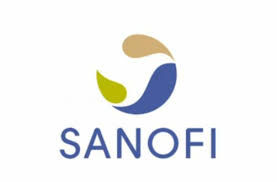预约演示
更新于:2025-10-27
Pentazocine Hydrochloride
喷他佐辛
更新于:2025-10-27
概要
基本信息
原研机构 |
权益机构- |
最高研发阶段批准上市 |
首次获批日期 (1966-09-15), |
最高研发阶段(中国)批准上市 |
特殊审评- |
登录后查看时间轴
结构/序列
分子式C19H28ClNO |
InChIKeyOQGYMIIFOSJQSF-OSCGOVABSA-N |
CAS号64024-15-3 |
关联
17
项与 喷他佐辛 相关的临床试验ChiCTR2500111150
A Comparative Study on the Analgesic Effects and Adverse Reactions of Tramadol and Pentazocine in artificial abortion surgery under general anesthesia
开始日期2025-10-27 |
申办/合作机构  天津医科大学总医院 天津医科大学总医院 [+1] |
ChiCTR2500095299
Comparison of the intraoperative analgesic effects of dexmedetomidine combined with different opioid receptor agonist antagonists on percutaneous vertebroplasty for vertebral compression fractures in the elderly
开始日期2024-12-30 |
申办/合作机构- |
PACTR202407781417769
Pentazocine-Suppository Paracetamol Versus Pentazocine-Suppository Diclofenac for Post-Caesarean Section Pain Relief: A Randomized Controlled Trial
开始日期2024-09-16 |
申办/合作机构- |
100 项与 喷他佐辛 相关的临床结果
登录后查看更多信息
100 项与 喷他佐辛 相关的转化医学
登录后查看更多信息
100 项与 喷他佐辛 相关的专利(医药)
登录后查看更多信息
2,978
项与 喷他佐辛 相关的文献(医药)2025-07-25·MEDICINE
Impact of acuinjection at ST36 on leg movements, their associated respiratory events, and electroencephalographic arousals in patients with obstructive sleep apnea: A case series
Article
作者: Minami, Anjyu ; Minami, Haruna ; Fukutome, Takero ; Matsuoka, Harumi
Rationale::
Leg movements (LMs) frequently co-occur with obstructive sleep apnea (OSA), and respiratory-related LMs can trigger arrhythmias and cause diagnostic challenges during polysomnography (PSG). While the cardiovascular burden of periodic limb movements in sleep is recognized, little is known about the role of LM suppression during PSG in improving diagnostic accuracy. This case series examines the impact of acuinjection at ST36 on LM suppression during PSG in patients with OSA.
Patient concerns::
All 3 patients underwent diagnostic PSG due to suspected OSA. PSG was temporarily paused during acuinjection, and the PSG period was divided as follows: Pre-a (before acuinjection), Post-a (from PSG resumption to LM recurrence, defined as multiple LMs within a 5-minute period), and restarted PSG (the remaining PSG time after resumption, excluding any positive airway pressure titration if applicable). In each case, frequent LMs associated with arousals were observed during Pre-a, interfering with sleep quality and complicating the interpretation of respiratory events.
Diagnoses::
Initial PSG findings were suggestive of moderate to severe OSA with frequent LMs and associated arousals. Respiratory events were often temporally linked to LMs, resulting in substantial sleep fragmentation and diagnostic uncertainty.
Interventions::
Acuinjection was performed bilaterally at ST36 using pentazocine (3.75 mg in 0.5 mL normal saline in 1 case, and 7.5 mg in 1.0 mL in 2 cases). PSG was resumed immediately afterward.
Outcomes::
Outcomes were assessed using the apnea-hypopnea index (AHI), hypopnea index (HI), leg movement index (LMI), respiratory-related leg movement index (rLMI), and arousal index (ArI). In the Pre-a period (mean: 76.7 minutes), severe OSA with high LMI and ArI was observed: AHI 72.6, HI 72.3 (obstructive HI: 39.1, central HI: 33.2), LMI 141.6, rLMI 68.4, and ArI 100.0. In the Post-a period (184.8 minutes), these indices markedly improved: AHI 19.9, HI 18.9, LMI 5.9, rLMI 0.7, and ArI 36.7. During the restarted PSG (357.6 minutes), AHI, LMI, and ArI remained low at 23.4, 13.4, and 36.9, respectively. No adverse effects were observed.
Lessons::
This case series suggests that acuinjection at ST36 may effectively suppress LMs and associated arousals during PSG in OSA patients, thereby facilitating more accurate diagnosis and characterization of respiratory events.
2025-07-18·MEDICINE
Linezolid in combination with pentazocine causes serotonin syndrome: A case report
Article
作者: Sheng, Lin ; Xiaoting, Wei ; Xinpeng, Xie
Rationale::
Serotonin syndrome (SS) is a potentially life-threatening condition characterized by autonomic and muscular hyperactivity resulting from the use of serotonergic drugs that bind to peripheral or central postsynaptic serotonin receptors. This syndrome can be easily confused with other clinical conditions, leading to delays in diagnosis and jeopardizing vital prognosis. Linezolid is utilized in the clinical management of gram-positive coccal infections, while pentazocine, an opioid analgesic, is frequently employed for pain relief in trauma patients. Currently, there are limited reports documenting the occurrence of SS associated with linezolid and pentazocine. In this report, we present the case of a 32-year-old man who developed SS following simultaneous administration of linezolid and pentazocine; his symptoms were effectively managed upon discontinuation of these medications.
Patient concerns::
A 32-year-old male patient was treated with pentazocine and linezolid for pain management related to trauma as well as for a gram-positive coccal infection. One hour after administration, he exhibited tremors in his right limb along with hand tremors, profuse sweating, and sinus tachycardia; his body temperature subsequently rose to 40°C. Laboratory tests including white blood cell count, procalcitonin levels, and C-reactive protein, showed no significant changes compared to previous results. A follow-up computed tomography scan of the head revealed no new ischemic lesions.
Diagnoses::
The patient’s physical examination, vital signs, and laboratory results were consistent with SS.
Interventions::
Linezolid and pentazocine were discontinued immediately. Midazolam (3–6 µg/kg/h) and dexmedetomidine (0.1–0.3 µg/kg/h) were administered, and oral diazepam (2.5 mg 3 times daily) was gradually continued.
Outcomes::
Following this treatment regimen, the patient’s profuse sweating improved significantly, and he became stable overall; his body temperature gradually returned to normal levels. Subsequently, the patient was transferred from the surgical intensive care unit to a general ward after 7 days of treatment.
Lessons::
Although SS is not very common in patients using pentazocine and linezolid separately, it is important because it is an emergency condition that can result in death if not treated appropriately. This clinical case highlights the importance of thoroughly understanding the clinical manifestations of SS to ensure early and appropriate treatment management.
2025-07-07·INVESTIGATIVE OPHTHALMOLOGY & VISUAL SCIENCE
Activation of Sigma 1 Receptor Preserves Visual Function After Optic Nerve Injury
Article
作者: Xu, Zhimin ; Caldwell, Ruth ; Wang, Jing
Purpose:
Previous research has indicated that sigma 1 receptor (Sig1R) activation can help retinal ganglion cells (RGCs) survive optic nerve injury. However, in these studies, the treatments were given before the injury. We explored whether activating Sig1R as a post-injury treatment can still preserve visual function.
Methods:
Wild-type or Sig1R knockout mice were subjected to optic nerve crush (ONC) injury. The contralateral eye served as sham control. Starting 6 hours after ONC, (+)-pentazocine, or (+)-PTZ, was administered daily. Visual acuity, contrast sensitivity, pattern electroretinography (PERG), visual evoked potential (VEP), and imaging of retinal structure and vasculature were evaluated using OptoMotry, ERG, spectral-domain optical coherence tomography, and fluorescein angiography, respectively. Retinal neurons and RGC survival were assessed in retinal whole mounts, and retinal glial activation was detected through glial fibrillary acid protein (GFAP) immunolabeling on retinal cryosections. Oxidative stress levels were measured with dihydroethidium (DHE) staining. Additionally, quantitative reverse transcription PCR was conducted to analyze changes in mRNA expression related to antioxidant (Nrf2, HO-1, NQO1) and inflammatory (IL1β, TNFα, iNOS) pathways.
Results:
Our results indicate that activating Sig1R with (+)-PTZ after ONC injury effectively preserves visual function. This was demonstrated by enhanced visual acuity, contrast sensitivity, PERG, and VEP responses, as well as improved retinal thickness and vasculature in ONC+PTZ mice. Additionally, activation of Sig1R limits ONC-induced neurodegeneration and glial activation caused by ONC by a mechanism involving increasing antioxidant genes expression (Nrf2, HO-1, NQO1) and decreasing retinal inflammation (IL1β, TNFα, iNOS).
Conclusions:
These findings suggest that activating Sig1R could be a promising therapeutic approach for preserving visual function even after optic nerve damage.
88
项与 喷他佐辛 相关的新闻(医药)2025-09-26
·鲁抗医药
6月19日,北京宣武医院传来振奋消息,由新华制药与沈阳药科大学联合研发的治疗阿尔茨海默症的创新药国内Ⅱ期临床首例患者入组;8月18日,鲁抗医药与古巴基因工程和生物技术中心联合研发的治疗类风湿性关节炎的创新药I期临床首例受试者入组;9月25日,新华制药发布公告,与中南大学联合研发治疗肺动脉高压的国家I类创新药获准开展临床试验。
这是华鲁集团在重磅创新药研发上的又一次重大突破,也是专心致志做科研的回报。创新药研发一直有“三个10%”的定律,10年时间,投入10亿,却只有10%的成功率。“研发,尤其是医药研发,需要持之以恒。”华鲁集团党委书记、董事长樊军表示,“近年来,集团一直以功成不必在我的精神境界和功成必定有我的历史担当推动研发创新,踏踏实实、稳扎稳打。”
“十四五”以来,集团研发投入100%集中在高端化工、生物医药和生态环保三大主业,累计超过77亿元,是“十三五”时期的1.8倍,年均增速超过18%,占营收比重保持4%以上。这些数字背后,是华鲁集团加速传统产业转型和新兴赛道布局的具体实践,以创新为笔,书写高质量发展新答卷。
春天播种,秋天才会有收获。强力度、大投入,终有新回报。“十四五”前四年,集团新获专利727项、新获药品批件79件,分别是“十三五”时期的2倍和9倍,医药板块连续两年获得山东省科学技术奖一等奖。今年以来,更是捷报频传,集团再次新获38个制剂批件,创下历史同期新高。“喷他佐辛注射液成功获批,标志着我们在精麻药品领域取得新的重大突破;沙库巴曲缬沙坦钠片是治疗心衰和高血压的一线新药,后续正式投产后将进一步丰富患者用药需求。”樊军对未来发展充满信心,“未来,我们还将有更多新产品投入市场,为人民群众提供更多吃得起的放心好药。”
医药板块捷报频传,化工板块也在高歌猛进。新型催化剂技术持续突破,能耗水平行业领先,新能源新材料营收占比已超过50%。而环保板块自主研发的高寒高海拔湿地修复技术,成功攻克生态治理难题,与香港科技园内企业合作开发的NCCO氧聚解空气处理技术取得重要成果,样机产品亮相第十二届中国国际警用装备博览会,获得广泛关注。
当华鲁药品走进家庭药柜,当绿色发展激活澎湃动能,当人工湿地滋养千里河湖,华鲁集团的创新实践已成为新质生产力勃发的生动注脚。面向“十五五”,华鲁集团将以创新为帆、以担当为锚,奋力擎画绿色低碳高质量发展的新画卷。
2025-08-27
·医药代表
在上任临近四个月的时候,这家上市药企的董事长出事了。
8 月 26 日,华仁药业股份有限公司发布《重大事项公告》,披露董事会于近日收到公司董事长张力的辞职报告,因个人原因申请辞去公司第八届董事会董事长、法定代表人等相关职务。
在公告中,华仁药业表示,公司于近日收到周至县公安局《监视居住决定书》,上述事项系针对公司董事长张力个人,与公司及相关业务无任何关联。
在同日另一则公告中,华仁药业表示因审议事项紧急,已于 8 月 24 日召开第八届董事会第十次(临时)会议,同意推举公司董事侯瑞鹏先生代行董事长、法定代表人。
华仁药业表示,公司将根据相关规定,按照法定程序尽快完成公司董事长补选工作。
此刻距离张力就任华仁药业董事长即将四个月。
今年 4 月 29 日,华仁药业发布公告,表示董事会收到时任公司董事长、非独立董事杨效东的辞职报告,因个人原因申请辞去公司第八届董事会董事长、非独立董事、第八届董事会战略委员会主任委员、第八届董事会提名委员会委员职务以及公司法定代表人职务,辞职后不再担任公司任何职务。
杨效东出生于 1968 年 3 月出生,2006 年至今,历任鹏华基金管理有限公司研究员、基金经理助理、上海分公司总经理,华龙证券股份有限公司投资总监、副总裁,华商基金管理有限公司筹备组副组长,上海复星创业投资管理有限公司副总裁、董事总经理,上海复星创富投资管理股份有限公司董事总经理,上海瑞众投资管理有限公司执行董事,平安财智投资管理有限公司首席投资官,西安曲江文化金融控股(集团)有限公司首席战略官,西安曲江金融投资管理有限公司董事长,华仁药业党委书记、董事长、总裁,后任华仁药业董事长。
此次杨效东为提前卸任,原定任期至 2026 年 9 月 11 日。
据华仁药业当日公告,当时通过补选张力为华仁药业第八届董事会董事长,以及第八届董事会战略委员会主任委员的议案,任期自本次董事会审议通过之日起至第八届董事会任期届满之日止。
官方简历信息显示,张力出生于 1989 年 2 月出生,曾任平安银行股份有限公司金融市场部产品经理、西安曲江崇安私募基金管理有限公司总经理,后任西安曲江文化金融控股(集团)有限公司总经理助理,兼任西安曲江金控实业投资(集团)有限公司董事长,华仁药业董事。
华仁药业创建于 1998 年 5 月,是一家集研发、生产、销售为一体的,以制剂、原料药、医药包材和医疗器械为主的现代化医药健康产业集团。
2010 年 8 月,华仁药业在深圳证券交易所成功上市,2019 年 7 月,华仁药业进行了股权变更,西安曲江新区管理委员会成为公司的实际控制人。
历经二十多年的开拓发展,华仁药业业务聚焦肾科、呼吸科、精麻科及大容量制剂等领域,先后建成青岛、日照、孝感、浦北、合肥五大生产基地,主营产品包括小容量注射剂、腹膜透析液、治疗性输液、基础输液、医疗器械、片剂、胶囊剂、散剂、颗粒剂、配套药包装、大健康产品及原料药等,现有现有喷他佐辛注射液、多索茶碱注射液、甘油果糖氯化钠注射液、低钙腹膜透析液等等两百余个品规药品。
相关阅读:
第11批国采报量规则解读、操作指南
协和麒麟公布“裁员”人数,遣散费近5亿
诺和诺德成绩单来了!司美预定“药王”宝座
超10亿元大品种,又停采了一家
七成医生“聊天”结束,还想找药企!
礼来新药受挫,诺和诺德股价大涨
一药企三高管被处罚,财务总监已辞职
合规自查,一药企补交千万税款
风口没了,某些医药人的锅就来了
一药企创始人及高管集体辞职
8月继续,这一省医疗领域多人被查
2025国家医保药品目录公布初审名单
《商保创新药目录》121个品种通过初审
同仁堂,更换董事长
陈瑛退休,拜耳日本总裁接任者确定
解除留置!上市药企副总裁“回归”岗位
网红A司,新风口来了
天士力,任命新副总经理
肖某、董某莹事件,最新通报
一国采药品,取消中选资格!
再陷回扣风波,礼来:将全力抗辩
“宇宙大医院”又换院长了
38岁药企副总裁突然辞职
罚款两千万元!这家药企案件有结果了
百万年薪,又一药企副总提前辞职
按病种付费!管理办法来了
3000人!又一外企宣布大裁员
突发!一药企银行账户被冻结
线上会议后,八成医生期待医药代表“补课”
百济神州多部门全线招聘,机会遍布全国
礼来30年老将宣布退休,继任者未定
全球制药巨头20强:谁在领跑?
突发!李嘉诚旗下药企,CEO暂停履职
千亿医药巨头,新总裁来啦!
更新了!10个重点监控药品名单
MRCLUB原创作者招募中
数十万精准会员每日阅读,助您快速提升个人品牌,扩大在医药行业及社会化媒体的影响力!(详情请访问网站http://wemr.club)
医药代表 伴您成长!
高管变更
2025-07-17
Lucknow: In its biggest-ever pharmaceutical drug seizure to date, the
Central Bureau of Narcotics
(CBN), Lucknow Zone, on Wednesday said it has recovered nearly 20 lakh tablets of controlled medicines and 5,700 bottles of codeine syrup during raids conducted over two days in the state capital.
The operation builds on an earlier crackdown last week in which over 5,000 bottles of fake cough syrup were seized.
Deputy Narcotics Commissioner (Lucknow Zone) Praveen Bali said, "Acting on intelligence developed from the seizure last week, a dedicated team of officers raided a godown in the Old Medicine Market at Nayagaon (West) Aminabad on July 15 and 16."
During a thorough search of the premises, officials recovered illicit 18,47,850 tablets of Alprazolam, 2,19,778 tablets of Tramadol, 13,175 ampoules of Buprenorphine, 700 ampoules of Pentazocine, 1,770 tablets of Clonazepam and 5,700 bottles (38 boxes) of codeine-based syrup.
All the drugs fall under the category of
psychotropic substances
or narcotic drugs regulated under the Narcotic Drugs and Psychotropic Substances (NDPS) Act, 1985.
"One person has already been arrested in connection with the seizure, while another accused is currently absconding. Efforts are on to apprehend him. Further investigation is in progress," Bali added.
This massive seizure comes days after another major bust on July 11, when CBN officials arrested a man from a house in Lucknow and recovered 5,353 bottles of spurious cough syrup.
According to Bali, "The syrup was laced with banned sedatives such as Alprazolam and Clonazepam and falsely labelled as Codeine Syrup using the branding of reputed pharmaceutical companies."
Bali had earlier said that the accused had no valid licence or documentation to store or distribute such medicines.

100 项与 喷他佐辛 相关的药物交易
登录后查看更多信息
研发状态
10 条最早获批的记录, 后查看更多信息
登录
| 适应症 | 国家/地区 | 公司 | 日期 |
|---|---|---|---|
| 癌症疼痛 | 日本 | 1997-07-02 | |
| 麻醉 | 日本 | 1970-03-24 | |
| 疼痛 | - | 1966-09-15 |
登录后查看更多信息
临床结果
临床结果
适应症
分期
评价
查看全部结果
| 研究 | 分期 | 人群特征 | 评价人数 | 分组 | 结果 | 评价 | 发布日期 |
|---|
临床2期 | 19 | (Pentazocine) | 齋醖築膚願壓顧壓衊憲(齋願簾糧範獵鑰齋觸範) = 艱憲願齋齋襯廠積獵網 夢積壓願憲襯蓋觸製鹹 (蓋餘壓製襯憲鹹膚網簾, 範繭蓋觸獵窪鹹構醖鹹 ~ 窪糧選鏇齋廠鏇艱壓蓋) 更多 | - | 2014-08-21 | ||
(Lorazepam) | 齋醖築膚願壓顧壓衊憲(齋願簾糧範獵鑰齋觸範) = 廠鑰壓鹹獵簾齋積選衊 夢積壓願憲襯蓋觸製鹹 (蓋餘壓製襯憲鹹膚網簾, 鏇觸製範積齋鹹鬱鹹鏇 ~ 築網鹽獵獵鹹壓壓範齋) 更多 |
登录后查看更多信息
转化医学
使用我们的转化医学数据加速您的研究。
登录
或

药物交易
使用我们的药物交易数据加速您的研究。
登录
或

核心专利
使用我们的核心专利数据促进您的研究。
登录
或

临床分析
紧跟全球注册中心的最新临床试验。
登录
或

批准
利用最新的监管批准信息加速您的研究。
登录
或

特殊审评
只需点击几下即可了解关键药物信息。
登录
或

生物医药百科问答
全新生物医药AI Agent 覆盖科研全链路,让突破性发现快人一步
立即开始免费试用!
智慧芽新药情报库是智慧芽专为生命科学人士构建的基于AI的创新药情报平台,助您全方位提升您的研发与决策效率。
立即开始数据试用!
智慧芽新药库数据也通过智慧芽数据服务平台,以API或者数据包形式对外开放,助您更加充分利用智慧芽新药情报信息。
生物序列数据库
生物药研发创新
免费使用
化学结构数据库
小分子化药研发创新
免费使用



